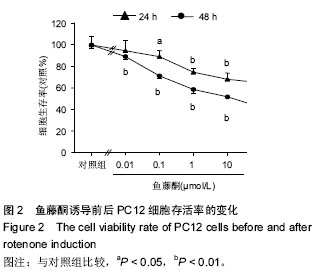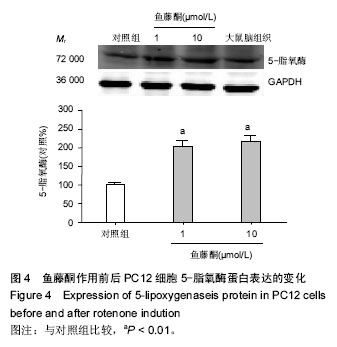| [1] Fahn S. Description of Parkinson’s disease as a clinical syndrome. Ann N Y Acad Sci.2003;991:14.
[2] 张美蓉,孙芳玲,艾厚喜,等.帕金森病的炎症及抗炎药物的研究进展[J].中国康复理论与实践,2012,18(11):1040-1043.
[3] 王进华,赵辉,崔桂云,等.帕金森炎症细胞模型的建立与炎症机制的研究[J].中国实用神经疾病杂志, 2012,15(8): 16-19.
[4] 刘素云,秦再生,陶涛.微小RNA在神经退行性变胶质细胞炎症相关过程中的研究进展[J].实用医学杂志, 2015, 31(13):2229-2231.
[5] 张丽,董靖德,鲁明,等.炎症反应在帕金森病中的研究进展[J].中国临床神经科学,2015, 21(2):223-227.
[6] 武冬冬,李淑华,苏闻,等.帕金森病患者神经精神症状及其影响因素研究[J].中国神经免疫学和神经病学杂志, 2015, 22(6):396-401.
[7] 王安海,赵文斌.帕金森病患者睡眠障碍多导睡眠图临床分析[J].中国社区医师,2015, 31(24):98-100.
[8] 曹秦,吴辉,张蓓蓓,等.黄酮类化合物在防治神经退行性疾病中作用的研究进展[J].中国药理学与毒理学杂志,2015, 29(3):1-7.
[9] 叶华,王耀光,金哲如,等.普拉克索联用美多芭治疗原发性帕金森病的疗效观察[J].现代实用医药,2015,27(10): 1307-1309.
[10] Sohn EJ,Shin MJ,Kim DW,et al.Tat-fused recombinant human SAG prevents dopaminergic neurodegeneration in a MPTP-induced Parkinson's disease model.Mol Cells.2014;37(3): 226-233.
[11] Anderson G,Maes M.Neurodegeneration in Parkinson's disease: interactions of oxidative stress, tryptophan catabolites and depression with mitochondria and sirtuins. Mol Neurobiol. 2014;49(2): 771-783.
[12] Samantaray S,Knaryan VH,Shields DC,et al.Critical role of calpain in spinal cord degeneration in Parkinson's disease.J Neurochem.2013;127(6): 880-890.
[13] Dexter DT,Jenner P.Parkinson disease: from pathology to molecular disease mechanisms. Free Radic Biol Med.2013;62:132-144.
[14] Perry VH.Innate inflammation in Parkinson's disease.Cold Spring Harb Perspect Med.2012;2(9): a009373.
[15] Teismann P.COX-2 in the neurodegenerative process of Parkinson's disease. Biofactors.2012;38(6): 395-397.
[16] Barnum CJ,Tansey MG.Neuroinflammation and non-motor symptoms: the dark passenger of Parkinson's disease.Curr Neurol Neurosci Rep.2012; 12(4):350-358.
[17] 陈春暖,陈祥荣,蔡若蔚,等.鱼藤酮建立帕金森病细胞模型的方法研究[J].中国神经免疫学和神经病学杂志,2015, 22(6):402-407.
[18] 李俊,王训翠,李庆林.伊拉地平对MPP+损伤PC12细胞保护作用的实验研究[J].安徽医药, 2015,19(2): 239-241.
[19] 余玉银,唐省三,李方成,等.水通道蛋白AQP9在帕金森病脑组织中的表达及作用[J].中国实用神经疾病杂志, 2015, 18(9):3-5.
[20] 郭祥玉,殷鹏,郑英慧,等.神经退行性疾病动物模型的建立与分析[J].遗传,2015,37(6): 615-616.
[21] 李晓波,徐芳.姜黄素对6-羟基多巴胺诱导的帕金森病模型的神经保护作用及机制研究[J].中南药学,2015, 13(1): 34-37.
[22] O?uzhano?lu E,Andaç AC,Tüfek A,et al.Protective role of caffeic acid phenethyl ester on serum cholinesterase inhibition by acute exposure to diazinon in rats.Turk J Med Sci.2014;44(1):115-120.
[23] Wu J,Omene C,Karkoszka J,et al.Caffeic acid phenethyl ester ( CAPE), derived from a honeybee product propolis, exhibits a diversity of anti-tumor effects in pre-clinical models of human breast cancer. Cancer Lett.2011;308(1):43-53.
[24] Irmak MK,Fadillioglu E,Sogut S,et al.Effects of caffeic acid phenethyl ester and alpha-tocopherol on reperfusion injury in rat brain. Cell Biochem Funct. 2008;21(3): 283-289.
[25] 吉海杰,仝立国,白崇智,等.黄芩苷对鱼藤酮致PC12细胞损伤的保护作用研究[J].中国中药杂志,2014,39(15): 2947-2951.
[26] 井秀娜,陈颖,毕伟,等.利福平通过抑制内质网应激减轻鱼藤酮诱导的PC12细胞损伤[J].岭南急诊医学杂志,2015, 20(3):219-221.
[27] Li CT,Zhang WP,Lu YB,et al.Oxygen-glucose deprivation activates 5-lipoxygenase mediated by oxidative stress through the p38 mitogen-activated protein kinase pathway in PC12 cells.J Neurosci Res.2009;87(4):991-1001.
[28] Wang ZJ,Zhou B,Mao WW,et al.Overexpression of 5-lipoxygenase increases the neuronal vulnerability of PC12 cells to Aβ?.Yakugaku Zasshi.2011;131(12): 1843-1853.
[29] Ge QF,Wei EQ,Zhang WP,et al.Activation of 5-lipoxygenase after oxygen-glucose deprivation is partly mediated via NMDA receptor in rat cortical neurons.J Neurochem. 2006;97(4):992-1004.
[30] Li CT,Zhang WP,Fang SH,et al.Baicalin attenuates oxygen-glucose deprivation-induced injury by inhibiting oxidative stress-mediated 5-lipoxygenase activation in PC12 cells.Acta Pharmacol Sin.2010;31(2):137-144.
[31] Zhang XY,Chen L,Xu DM,et al.Zileuton, a 5-lipoxygenase inhibitor, attenuates mouse microglial cell-mediated rotenone toxicity in PC12 cells.Zhejiang Da Xue Xue Bao Yi Xue Ban.2014;43(3):273-280.
[32] Zhang XY,Chen L,Yang Y,et al.Regulation of rotenone-induced microglial activation by 5-lipoxygenase and cysteinyl leukotriene receptor 1. Brain Res.2014;1572:59-71.
[33] Huang XQ,Zhang XY,Wang XR,et al.Transforming growth factor β1-induced astrocyte migration is mediated in part by activating 5-lipoxygenase and cysteinyl leukotriene receptor 1.J Neuroinflammation. 2012;9:145.
[34] Zhang XY,Wang XR,Xu DM,et al.HAMI 3379, a CysLT2 receptor antagonist, attenuates ischemia-like neuronal injury by inhibiting microglial activation.J Pharmacol Exp Ther. 2013;346(2):328-341.
[35] 尹洁,景玉宏,任银祥,等.咖啡酸苯乙脂对神经毒诱导帕金森病模型神经元损伤的保护作用[J].中药药理与临床, 2012, 28(1):32-34.
[36] Nakahara R,Makino J,Kamiya T,et al.Caffeic acid phenethyl ester suppresses monocyte adhesion to the endothelium by inhibiting NF-κB/NOX2-derived ROS signaling.J Clin Biochem Nutr.2016;58(3):174-179.
[37] Gun A,Ozer MK,Bilgic S,et al.Effect of Caffeic Acid Phenethyl Ester on Vascular Damage Caused by Consumption of High Fructose Corn Syrup in Rats.Oxid Med Cell Longev.2016;2016:3419479.
[38] Akyol S,Akbas A,Butun I,et al.Caffeic acid phenethyl ester as a remedial agent for reproductive functions and oxidative stress-based pathologies of gonads.J Intercult Ethnopharmacol.2015;4(2):187-191. |
.jpg)





.jpg)
.jpg)